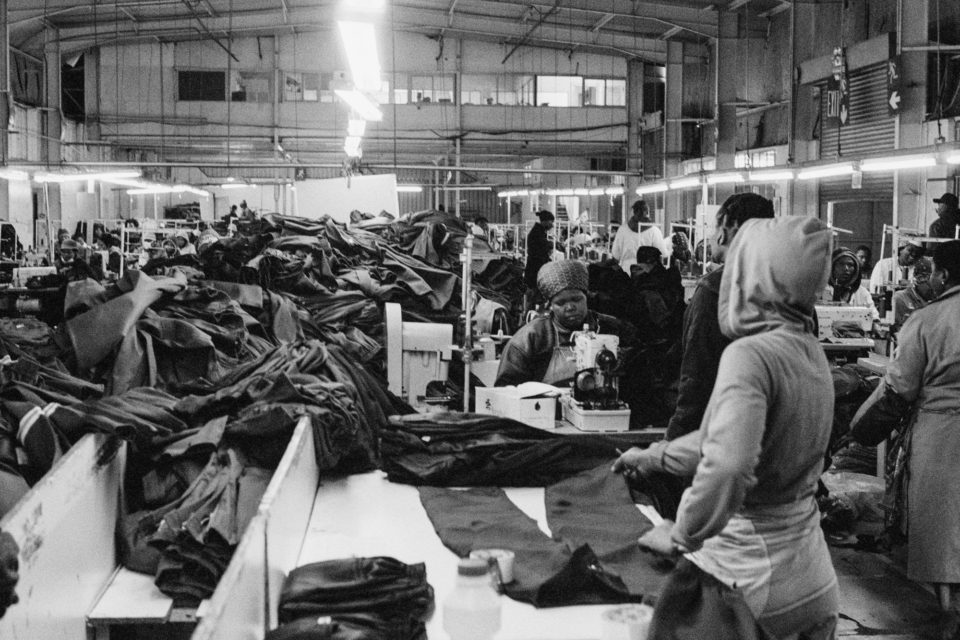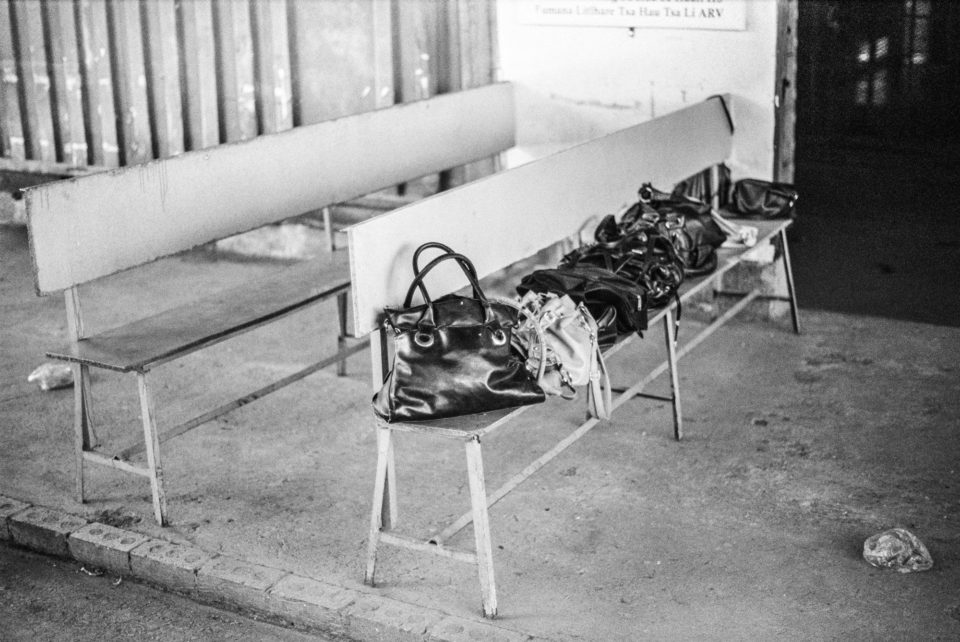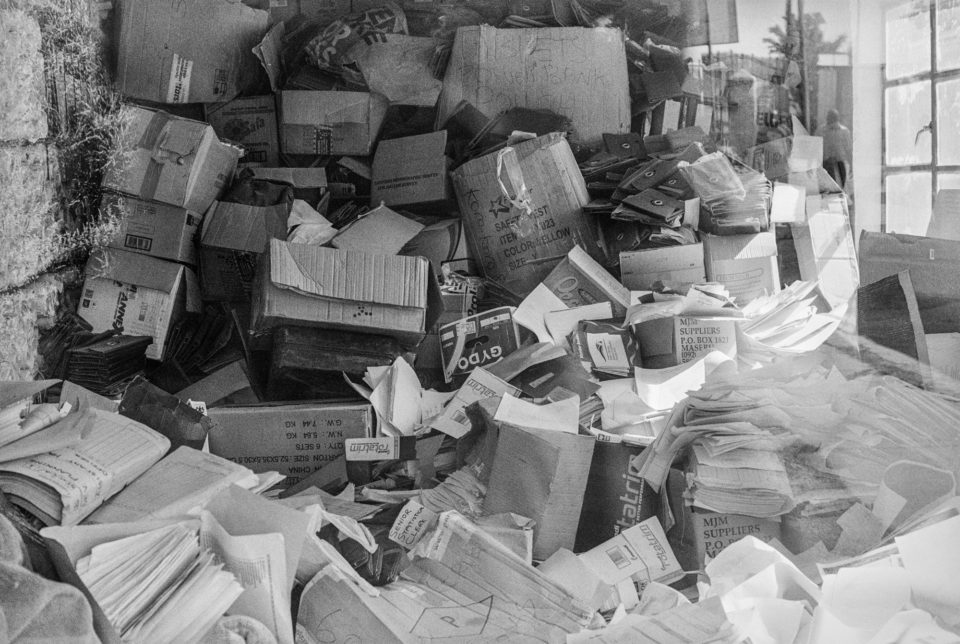Over the past few years artist Simon Gush has been thinking through how ideas about labour are constructed, as well as how labour is a factor which affects how people construct ideas about themselves and society as a whole. I interviewed him about his latest solo exhibition The Island showing at the Stevenson in Johannesburg which continues this theme.
How do you describe your work and your creative process?
The major part of my production over the last few years has been thinking around the problem of work. Not the problems of specific workplaces or jobs, but the central role work plays in society and the manner in which it affects how we think of ourselves. In particular, I am critical of the moralising of work. Ideas that: ‘Work makes us better,’ or “Hard work is good for you,’ are common inanities that circulate, which I take issue with. This has led me to look at histories of labour movements and the concepts of the work ethic. Specifically, my work has dealt with subjects like public representations of labour, the concept of laziness, strikes, the history of worker migration and resistance to work.
I work mainly in the form of essays, video and photography, moving between images and text. I find that I am able to approach my material differently by using both writing and image, each of which have particular ways of thinking. I am able to do more work at their intersection. When I finish a film or an essay, I find that there are questions that I could not answer in the piece. There is only so much I can do in one work. The unanswered questions then become the starting point for the next project. My essays are written and produced from my personal perspective, comprised of thoughts and anecdotes from my working life, intermingled with research around work; historical, political and ideological. It is important for me to place myself within my work.
Can you give some background on your exhibitions ‘Workplace’ (2015) and ‘Work’ (2013)? How is ‘The Island’ a continuation of or addition to the themes you looked at in these exhibitions?
‘Work’ and ‘Workplace,’ were centred around questions of work ethic and the moralising of work. The artworks that made up these exhibitions began to identify the way work is constructed in our society, the ideological aspect of work. I was conscious that, while there is a dominant idea of work, a colonial construct, society is never homogeneous. I started to realise that, in order to understand a place like Johannesburg, you can’t only look at the place itself. As this is a city built on migrant labour, I needed to start to investigate other places that have historically impacted on how work is formed here, especially those from which workers were sent.
‘Workplace’ was the first product of this research and took the form of a photographic essay about Mozambique. It tried to deal with the history of movement between here and Maputo. Not just by workers, but by disparate people, from the Voortrekkers to ANC exiles during apartheid. ‘The Island’ is a more in-depth look at the effects of systematic labour migration on the relationship between South Africa and Lesotho. Lesotho and Mozambique were historically the largest suppliers of migrant labour to the mines.

Tell our readers about your exhibition ‘The Island’?
‘The Island’ is centered around two major works, the eponymous photographic series, ‘The Island,’ and a new film essay, ‘Invasion.’ ‘The Island’ attempts to see Lesotho beyond the image of migrant labour. I started by looking at the sites of work within Lesotho; the factories, municipal offices, mines and so on. While I was doing this, I was thinking about the fact that the ANC used to call Lesotho “the island,” during the anti-apartheid struggle. This gave me the metaphor from which to start to differentiate Lesotho from South Africa, which surrounds it. The idea of the island also provided a way of thinking about how the forms of dependence and relationships between the two countries might be better understood. I was drawn to how the sea (in this case South Africa) serves as a resource for the island and an integral part of its economy and ecology.
Looking at these connections led me to research the Katse Dam, which provides water to Gauteng. I was interested in the invasion that happened in 1998, when South Africa entered Lesotho, on behalf of SADC, to stop protests around elections that had taken place there. I found out that, during this occupation, the SADC bombarded the Lesotho Defence Force base at Katse Dam. Six months earlier, Lesotho’s water had first begun to flow to South Africa. Because of this, the attack on the base didn’t make sense; except as a power play around the water. The military justification seemed tenuous. While researching this, I met an eyewitness to the attack. The film re-enacts two interviews I did with this witness. I had made an agreement with him to keep his testimony anonymous, hence the re-enactment, but it was also a way to make visible how histories are reconstructed and told. The re-enactments were done with the actor Phillip Dikotla.

Expand on your comment ‘thinking about a space that is thinking about someplace else’ relating to movement of people and resources between countries?
Around sixty percent of Lesotho’s population works in South Africa and will only return in December for the holidays. With the exception of the civil services, most of the formal jobs that are there are somehow connected to elsewhere. The factories are foreign-owned and the products are sold elsewhere. The diamonds from the mines are taken elsewhere to be cut and sold. There seems to be a sense of the displacement that pervades the space. This makes it a place that I had to keep thinking of, not in fixed terms, but according to flows, in and out of the country. This is, of course, true of other countries, but in Lesotho it is very present. It is a place that is hard to tie down. I like this idea as way to think about the local without the rhetoric of nationalism.
Why the focus on Lesotho?
The project started when I was by invited Lerato Bereng, (a South African based Basotho curator) to come to Maseru to do some research. She thought that I would be interested in the way in which flows of labour become visible there. At the same time, I had just visited Maputo. I had a feeling that the presence of the history that connects Mozambique with South Africa was something I wanted to speak to. In the beginning, I thought I would include other countries in the region that also have these links to Johannesburg and South Africa, and are similarly defined by labour, but it was too much for me to take on. It takes time to get a feel for the place and to start to see and understand the aspects that are of interest to the project, which not always immediately available. I have been working on this project for 3 years now and I am only just starting to feel like get some of what is going in the places I have visited.
The Island will be on show until 7 April.




















































